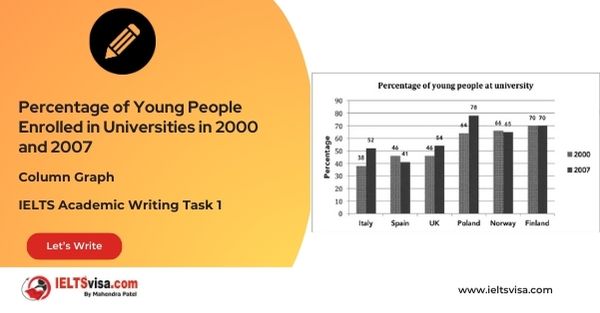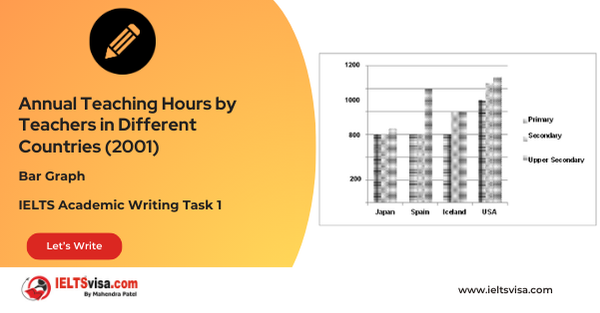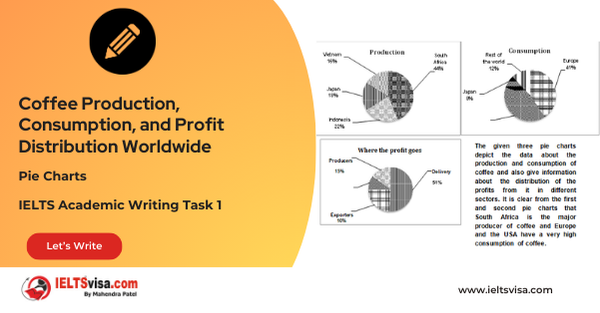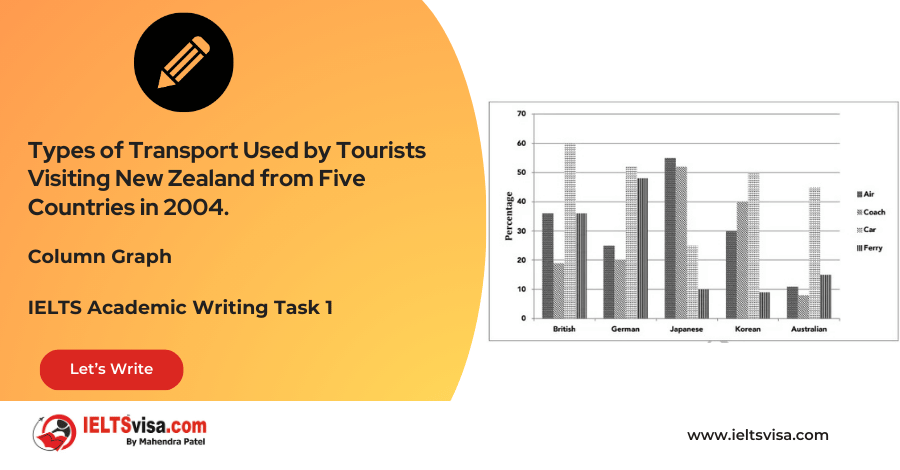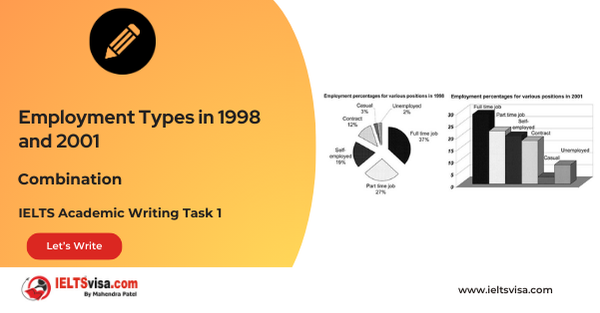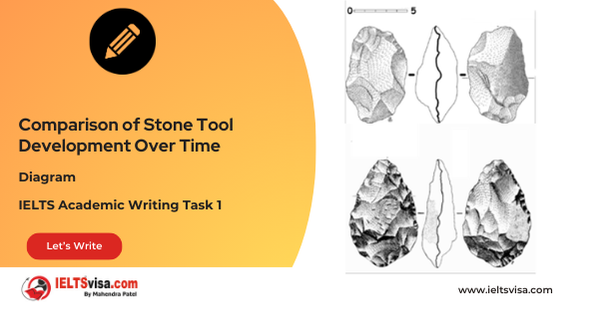The life cycle of the salmon
IELTS Academic Writing Task 1 - Diagram
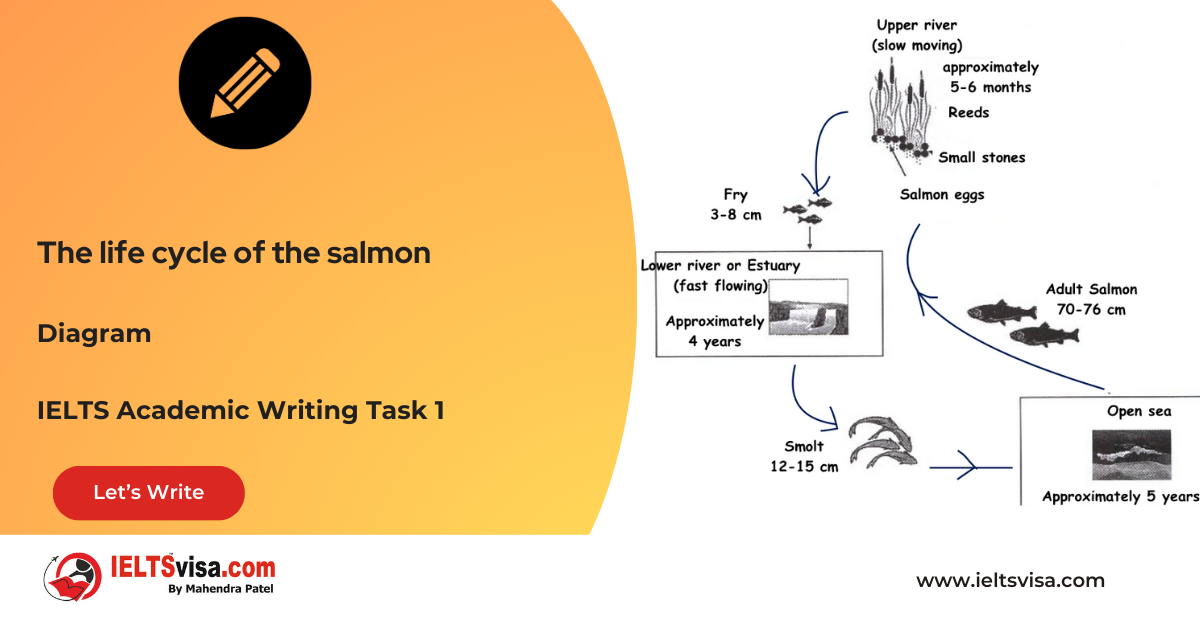
IELTS Writing Task 1 Question
The picture below shows the life cycle of the salmon. Summarise the information by selecting and reporting the main features and make comparisons where relevant.
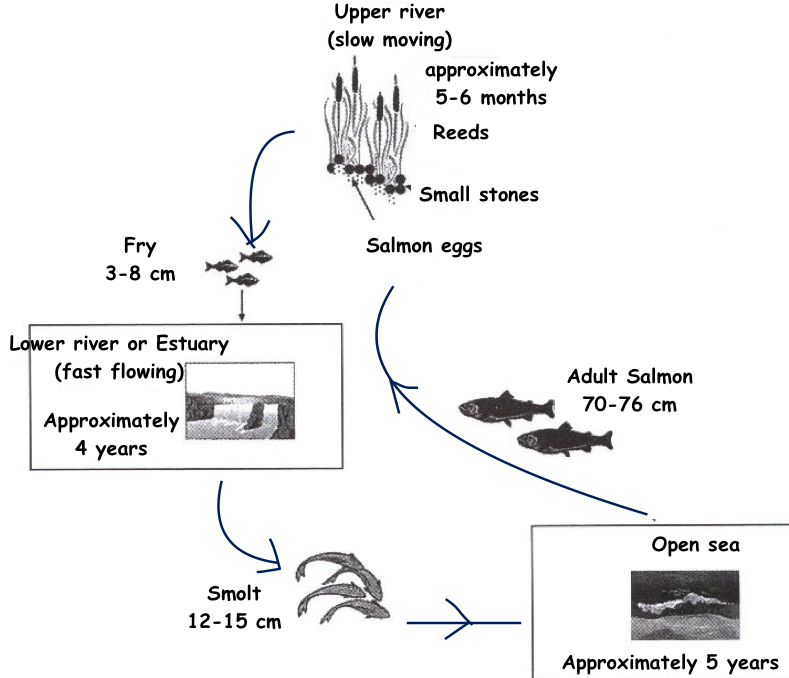
Common questions for the salmon life cycle diagram
1. Graph Type: Life cycle diagram (process flow).
2. Title: The Life Cycle of the Salmon.
3. What are the units of measurement?: The stages of the salmon’s life cycle, duration in each stage (in months and years), and size (in cm).
4. Who: The life cycle of the salmon is illustrated.
5. When: The life cycle stages span several years, from the egg stage to the adult salmon.
6. Where: The salmon lives in both freshwater (rivers, estuaries) and seawater (ocean).
7. Topic: The diagram describes the process of the salmon’s life cycle.
Comparison Showing and Trends
Comparison 1 : Freshwater and Saltwater
- The salmon’s life cycle includes time spent in both freshwater and saltwater. It begins its life in freshwater and migrates to seawater as it matures, living in each environment for several years.
Comparison 2 : Stages of Growth
- The salmon goes through three main life stages: fry, smolt, and adult. The fry and smolt stages occur in freshwater, where the fish grows from 3-8 cm to 12-15 cm, while the adult salmon stage takes place in the sea, where the salmon grows to a size of 70-76 cm
Comparison 3 : Duration of Each Stage
- The fry stage lasts for 5-6 months, the smolt stage lasts about 4 years, and the adult salmon lives in the sea for approximately 5 years before returning to its birthplace to spawn.
Sample Answer
The given diagram illustrates the life cycle of the salmon, which involves both freshwater and seawater environments.
Salmon begin their life as eggs laid in slow-moving rivers, typically sheltered by reeds and small stones. After 5-6 months, the eggs hatch into fry, measuring 3-8 cm. These fry then live in the lower, fast-moving rivers or estuaries for the next 4 years, growing into smolts, which are 12-15 cm long. The smolts migrate to the sea, where they spend around 5 years, reaching their full adult size of 70-76 cm.
After approximately five years in the ocean, adult salmon return to the river to spawn, completing their life cycle. They die after spawning.
Overall, the salmon goes through three stages: fry, smolt, and adult. The fry and smolt stages are spent in freshwater, while the adult salmon live in saltwater, illustrating the salmon’s ability to thrive in both environments. This unique life cycle, alternating between freshwater and saltwater, is what makes the salmon a remarkable species.
Top 26 Vocabulary
| Vocabulary | Meaning | Synonyms | Examples | Type |
| Fry | A young fish, typically newly hatched | Juvenile, young fish | “The fry live in the lower river for approximately 4 years.” | Noun |
| Smolt | A young salmon that has migrated from freshwater to saltwater | Young salmon, juvenile salmon | “The smolt grows to 12-15 cm in length before migrating to the ocean.” | Noun |
| Migrate | To move from one place to another, especially for breeding | Move, travel, relocate | “The smolt migrates to the open sea, where it spends several years.” | Verb |
| Estuary | A coastal area where freshwater from rivers meets and mixes with seawater | River mouth, bay | “The fry live in the estuary, where freshwater meets the sea.” | Noun |
| Spawn | To produce or lay eggs, especially in fish | Lay eggs, breed, reproduce | “After 5 years, the salmon returns to its birthplace to spawn.” | Verb |
| Hatch | To emerge from an egg, usually referring to fish | Emerge, break open | “The salmon eggs hatch into fry after 5-6 months.” | Verb |
| Sheltered | Protected or shielded from harm | Protected, safe | “The eggs are sheltered by reeds and stones in the river.” | Adjective |
| Fast-moving | Moving quickly, usually describing water or a current | Rapid, swift | “The fry live in fast-moving rivers for their early stages.” | Adjective |
| Size | The dimensions or magnitude of something | Dimensions, magnitude | “Adult salmon can grow to 70-76 cm in size.” | Noun |
| Adult | Fully grown, mature individual | Mature, fully grown | “Adult salmon spend most of their lives in the sea.” | Adjective/Noun |
| Thrive | To grow, develop, or be successful in an environment | Flourish, prosper | “The salmon thrive in both freshwater and seawater.” | Verb |
| Cycle | A series of events that repeat in a specific order | Process, sequence | “The life cycle of the salmon involves several stages.” | Noun |
| Unique | Being the only one of its kind | Uncommon, rare | “The salmon’s ability to thrive in both environments is unique.” | Adjective |
| Environment | The surrounding conditions where an organism lives | Habitat, surroundings | “Salmon adapt to both freshwater and saltwater environments.” | Noun |
| Salmon | A type of fish known for its migration patterns | – | “Salmon are known for their remarkable life cycle.” | Noun |
| Rivers | Large, natural streams of water flowing toward seas | Streams, waterways | “Salmon begin their life in slow-moving rivers.” | Noun |
| Oceans | Vast bodies of saltwater that cover much of Earth’s surface | Seas, saltwater | “Adult salmon spend 5 years in the ocean before returning.” | Noun |
| Reeds | Tall, slender-leaved plants growing in water | Grass, rushes | “The eggs are laid near reeds in the river.” | Noun |
| Migratory | Describing animals or organisms that move seasonally | Nomadic, traveling | “Salmon are migratory and travel between freshwater and seawater.” | Adjective |
| Flow | The movement or direction of a liquid, such as water | Stream, current | “The flow of water helps the salmon grow and migrate.” | Noun/Verb |
| Threshold | The point or level at which something begins or changes | Limit, boundary | “The salmon reach a threshold size before migrating to the sea.” | Noun |
| Reproduce | To produce offspring or new individuals | Breed, generate | “Salmon reproduce by spawning after returning to their birthplace.” | Verb |
| Species | A group of organisms that can interbreed and produce offspring | Type, breed | “Salmon are a species known for their unique life cycle.” | Noun |
| Habitat | The natural environment where an organism lives | Environment, dwelling | “The salmon’s habitat changes as they move between environments.” | Noun |
| Predator | An animal that hunts and eats other animals | Hunter, killer | “Salmon are preyed upon by larger fish in the ocean.” | Noun |
| Biodiversity | The variety of plant and animal life in a particular area | Variety, richness | “The river and ocean environments support diverse biodiversity.” | Noun |

Our Books
Master IELTS Speaking Part 1
IELTS Writing Task 1 Book
IELTS Writing Task 2 Book
Writing Task 1 Question Types
Practice IELTS Other Modules
IELTS Listening
The IELTS Listening test assesses how well you can understand spoken English in various contexts. It lasts about 30 minutes and is divided into four sections with a total of 40 questions. The listening tasks become increasingly difficult as the test progresses.
IELTS Academic Reading
The IELTS Academic Reading section assesses your ability to understand and interpret a variety of texts in academic settings. It is designed to evaluate a range of reading skills, including skimming for gist, reading for main ideas, reading for detail, understanding inferences, and recognizing a writer's opinions and arguments.
IELTS Speaking
The IELTS Speaking test assesses your ability to communicate in English on everyday topics. It lasts 11-14 minutes and consists of three parts: introduction, cue card, and a discussion based on the cue card topic.
IELTS General Reading
IELTS General Reading tests your ability to understand and interpret various types of texts. Here are some key areas and types of content you can expect to encounter in the reading section, along with tips for effective preparation.
IELTS Academic Writing Task 1
In IELTS Academic Writing Task 1, you are presented with a visual representation of information, such as graphs, charts, tables, or diagrams, and you are required to summarize, compare, or explain the data in your own words.
IELTS General Writing Task 1
In IELTS General Writing Task 1, you are required to write a letter based on a given situation. The letter can be formal, semi-formal, or informal, depending on the prompt. Here’s a breakdown of the key components to include in your letter
IELTS Academic Writing Task 2
In IELTS Academic Writing Task 2, you are required to write an essay in response to a question or topic. Here’s a guide to help you understand the essential elements of this task
IELTS Exam Tips
To succeed in the IELTS exam, practice regularly, familiarize yourself with the test format, improve your vocabulary, develop time management skills, and take mock tests to build confidence.
Grammer for IELTS
Grammar is the foundation of effective communication in English. Understanding tense usage, subject-verb agreement, and sentence structure enhances clarity and coherence in writing and speaking.
Vocabulary for IELTS
Vocabulary plays a crucial role in the IELTS (International English Language Testing System) exam, especially in the Speaking and Writing sections. Here’s an overview of why vocabulary is important and how it impacts your performance
RECENT IELTS SAMPLES QUESTIONS AND ANSWERS
Task 1 – Column graph – Percentage of Young People Enrolled in Universities in 2000 and 2007.
20:00 Start Pause Stop [df_adh_heading title_infix="IELTS Writing Task 1 Question" use_divider="on"...
Task 1 – Bar Graph – Annual Teaching Hours by Teachers in Different Countries (2001)
20:00 Start Pause Stop [df_adh_heading title_infix="IELTS Writing Task 1 Question" use_divider="on"...
Task 1 – Pie Charts – Coffee Production, Consumption, and Profit Distribution Worldwide
20:00 Start Pause Stop [df_adh_heading title_infix="IELTS Writing Task 1 Question" use_divider="on"...
Task 1 – Column graph – Types of Transport Used by Tourists Visiting New Zealand from Five Countries in 2004.
20:00 Start Pause Stop [df_adh_heading title_infix="IELTS Writing Task 1 Question" use_divider="on"...
Task 1 – Bar and Pie Chart Combination – Employment Types in 1998 and 2001
20:00 Start Pause Stop [df_adh_heading title_infix="IELTS Writing Task 1 Question" use_divider="on"...
Task 1 – Diagram – Comparison of Stone Tool Development Over Time
20:00 Start Pause Stop [df_adh_heading title_infix="IELTS Writing Task 1 Question" use_divider="on"...

